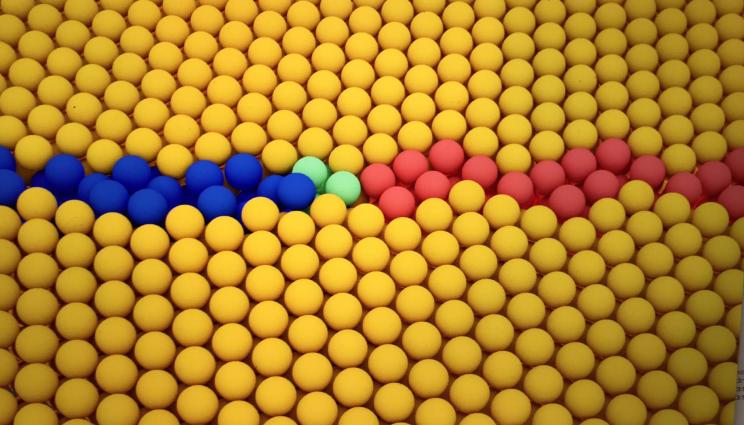
Coexistence of different grain boundary phases observed by high-resolution transmission electron microscopy.
The regions separating individual crystals in a material are notorious defects, spoiling the simple arrangement of atoms within the crystals.
To improve the understanding of how those defects, called grain boundaries, create stronger and more durable materials, a team of scientists from Lawrence Livermore National Laboratory (LLNL) and Max-Planck-Institut für Eisenforschung, have for the first time observed how they transition from one form to another in an elemental metal. The research appears in the March 19 edition of the journal Nature.
Scientists understand that conventional phase transitions in the bulk control many materials properties. Much of materials science involves the delicate interweaving of thermodynamics and kinetics, using phase transitions to sculpt advantageous microstructures, including the critical grain boundaries.
Grain boundary phase transitions open up new strategies to invent better materials. While grain boundary energetics and kinetics have long been understood to be key to attaining favorable microstructures, the possible role of grain boundary phase transitions has been neglected. Indeed, every experiment looking for them in elemental metals failed, until now.
In the new work, the team showed how grain boundary phases exist in nature in an elemental metal. Using atomic resolution scanning transmission electron microscopy (TEM), team members saw that a boundary in copper can have multiple structures, the same structures as found in atomistic simulation.
"The recent suggestions of modeling and now the discovery of grain boundary phase transitions in a relatively simple elemental metal open the door to new strategies for materials design," said LLNL material scientist Timofey Frolov, a co-author of the paper.
One of the key observations made in the study is that the kinetics of these transformations can be limited by the mobility of novel line defects in different grain boundary phases. As a result, metastable grain boundary states with multiple phases can be effectively frozen and observed by TEM at room temperature. The ability to prepare specific grain boundary structures with desired properties by using impurities or temperature and preserve them even after conditions have changed could offer new ways of tailoring properties of materials.
LLNL material scientist Rob Rudd also contributed to the report. The LLNL portion of the work was funded by the Laboratory Directed Research and Development program.






